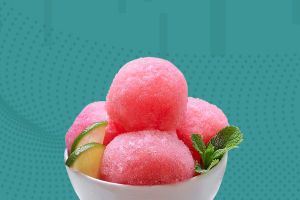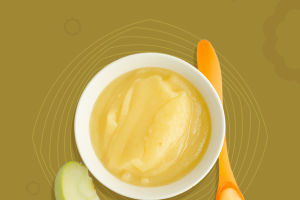Desserts have a long history. As early as 5,000 years ago in ancient Egypt, desserts as tributes had already appeared. Sweetness can bring us happiness and is the most popular taste for human beings. Desserts have developed so far and have spread all over the world, with so many types that the number of people is uncountable. Each country has its own unique desserts, here are some dessert powerhouses.
1. France
In France, desserts are an indispensable part of people's daily diet, and a culture has been formed. Is the romance and sweetness of the French people's talent also derived from this? Opera is a famous French cake. It was born in 1954 and has a history of hundreds of years. This cake was created in Dalloyau, a famous dessert shop in Paris, and was inspired by the French National Opera Opéra. The traditional Opera has six layers. The sponge cake soaked in coffee syrup is mellow and soft. The fillings made of butter, fresh cream and chocolate cream are interspersed with the milky fragrance. There is also chocolate sauce covering the surface. Take a bite, the taste is rich and layered, fragrant and mellow, delicate and soft, just like an opera dreamy and beautiful, worthy of the name of the opera house!
Although the macaron was invented by the Italians, after being introduced to France, it has been improved and changed by a large number of French chefs, and it has become one of the symbols of today's French desserts. Today's macarons are French patties made with egg whites, almond flour, sugar and icing sugar, and filled with fruit jam and cream. The macaron is extremely thin and crispy on the outside, soft and dense on the inside, and the jam and macaroons in it add chewiness and layers. Because of its small size and colorful, it has become one of the most popular desserts for women.
2. Italy
Italy is also the birthplace of many famous desserts.
Tiramisu is a coffee-flavored Italian dessert. In Italian, tiramisu means take me away. This is a romantic pastry with a lingering love note. Tiramisu appeared in Venice, Italy in the 1960s. The locals used mascarpone cheese as the main material, and then replaced the traditional dessert sponge cake with dense finger biscuits. Cocoa powder and other materials are used to make this cake with a dense and rich taste. Tiramisu is fragrant and sweet, soft without losing texture. The taste is changeable, with a hint of bitterness. It matches with cappuccino and has more flavor!
3. Japan
Delicacy is one of the characteristics of Japanese desserts.
Wagashi is a kind of Japanese dessert made of glutinous rice, sugar, adzuki beans, etc. There are many kinds and elegant names. The variety of wagashi's appearance is also second to none in the world. Pastry chefs will make wagashi into lifelike flowers, birds, fish and insects, or create a corresponding atmosphere according to the season, which is also the embodiment of Japanese refined culture. In the filling section, Wagashi is mostly filled with red bean filling, white bean paste filling, and occasionally matcha filling. Seasonal fillings include plums and persimmons. Add flour, rice (including glutinous rice, Penglai rice), combined into a variety of changes. As soon as you arrive in Japan, walking into a wagashi shop is absolutely dazzling, with all kinds of exquisite and beautiful shapes. The biggest problem is probably how to eat these desserts like works of art.
4. Germany
Baumkuchen originated in Saxony-Anhalt in eastern Germany. It is a famous product in Magdenburg and is known as the king of German cakes. It is complex to make, contains deep blessings and long-lasting meanings, so it is the main pastry for celebrations such as weddings. The uniqueness of Baumkuchen lies in its layered texture like the rings of a tree. Making Baumkuchen requires a special equipment, with a continuously rotating iron rod. After the chef has prepared the ingredients, he slowly pours them on the iron rods, and after pouring them evenly, they are sent to high temperature for baking. After this layer of skin is almost cooked, the chef can drizzle the second layer. It is this kind of layer by layer and layer by layer roasting to create such a beautiful pattern. Baumkuchen is soft and layered, and it is even more delicate when paired with coffee.


